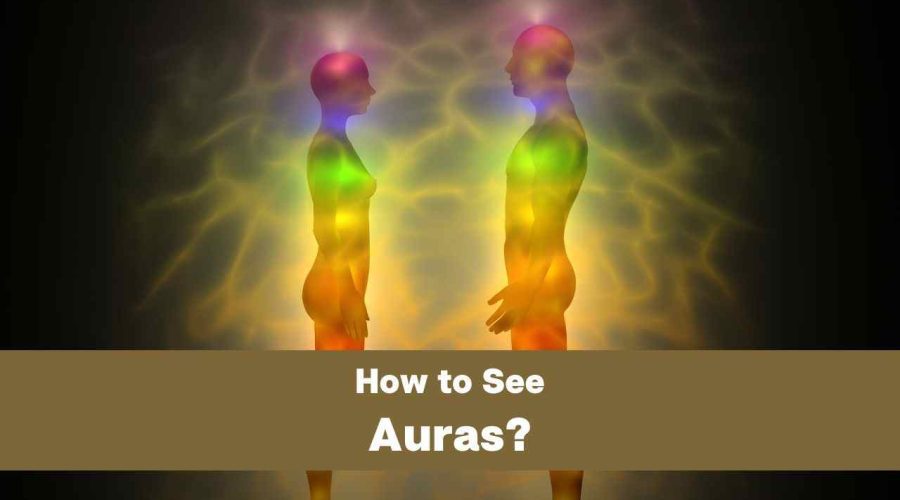How to See Auras? A Complete Guide
Article Rating
☆☆☆☆☆ 4.1/5
If you’re searching for “how to see your aura” you’re in the perfect place! We will guide using easy steps to develop this skill. So Keep reading.
Each individual and each molecule in his body emits energy. Tuning into a particular level of consciousness is all that is required to perceive that.
What is the Aura?
Your aura is thought to be a luminous body that surrounds your physical one. Each layer — and any problems in them — surrounds your body in a net of energy.
Although aura as a concept stands in opposition to contemporary science, scientists are growing to believe in energies. Numerous experiments are being undertaken, and many of them lend credence to the theory that this world and every living and non-living object that occupies it are influenced by the energies that surround it.
If you’ve always been curious about observing auras and how so many people can perceive this invisible substance, this article presents a concise guide for developing this skill:-
Steps to follow to observe the Aura
Step 1: Request that the person whose aura you wish to see stand around 10 feet away from you. Ensure that the background is either entirely white or entirely black. Also, regulate the room’s lighting so that it is neither too dim nor too bright. The optimal lighting source is natural light.
Step 2: Now, you must concentrate on the individual’s nose. Don’t stare too intently and maintain a relaxed gaze so that you can concentrate on your peripheral vision. Even if you are intentionally focusing on a person’s nose, your peripheral vision will allow you to observe his sides.
Step 3: You will begin to see a shadowy and enlarged outline of the person’s body in. It will not be excessively dense and will be extremely benign. However, you must not become overly excited and start focused on the shadow instead of straight ahead. Stay relaxed.
Step 4: Begin peripherally watching the outline that has formed around the individual. As you proceed, the aura will begin to solidify before your eyes.
Step 5: Gently transfer your eyes from the person’s nose to their forehead, beginning at the bridge of the nose. This will allow you to see their aura more clearly.
In addition, at first, you may only notice a single colour in a person’s aura, but as you acquire experience, you will begin to perceive other colours.
Interpreting the Aura’s Colours
Red: A red aura represents vitality, enthusiasm, and adventure, as well as rage and volatility. People with red auras are sincere, direct, powerful, competitive, and have an urgent need to be the best at all times.
Yellow: The colour yellow represents an intelligent and creative mind. Individuals with primarily yellow auras might be logical and, at times, overly self-critical. Additionally, they can be quirky and workaholics. They are sociable and assured.
Blue: Auras of eloquent, charismatic, and inspiring individuals. They can also be insightful and serve as mediators between two irate parties. It may be challenging for them to maintain a balance between their heads and hearts.
Green: Individuals with a green aura are primarily inventive and diligent. They are determined, pragmatic, and typically successful. They might also act as perfectionists and pursue gardening as a profession.
Golden: A person with a golden aura is extravagant by nature. They might be egotistical and conceited, valuing external appearance. They dislike having their weaknesses exposed and crave attention.
Pink: Pink auras represent friendliness, generosity, concern, loyalty, and romance. People with pink auras make excellent companions and hosts. They have a strong moral code and so abhor all forms of injustice.
Black: Black is most likely the most negative colour that can show in an individual’s aura. It is linked to mental disease, stress, depression, hostility, and unpleasant emotions. It can also signify a person’s tendency to behave impolitely.
Other Colours
There are numerous different colours visible in a person’s aura. Brown might represent confusion and indecision, orange can represent generosity and compassion, and purple can represent sensitivity and mystique.
Possible Hindrances in Observing the Aura
Observing someone’s aura requires practice, concentration, and perseverance. It may take a great deal of time or none at all to get it correctly. It depends entirely on your level of attention and how you channel your consciousness.
Initially, as you blink while doing this action, you will notice that the aura dissipates. This is because your brain closes out what you were perceiving before blinking. However, as you continue to practise, this will occur less frequently.
How to Perceive One’s Aura
If you are interested in visualising your aura, you must conduct a similar procedure with your hand. Bring your hand forward with your palm facing you and a white or black background.
Concentrate on the palm’s centre and attempt to discern its outline. You can also squish your fingers together and then separate them, or gently wave your hand, to create a more distinct outline. This will assist you in enhancing your aura.

